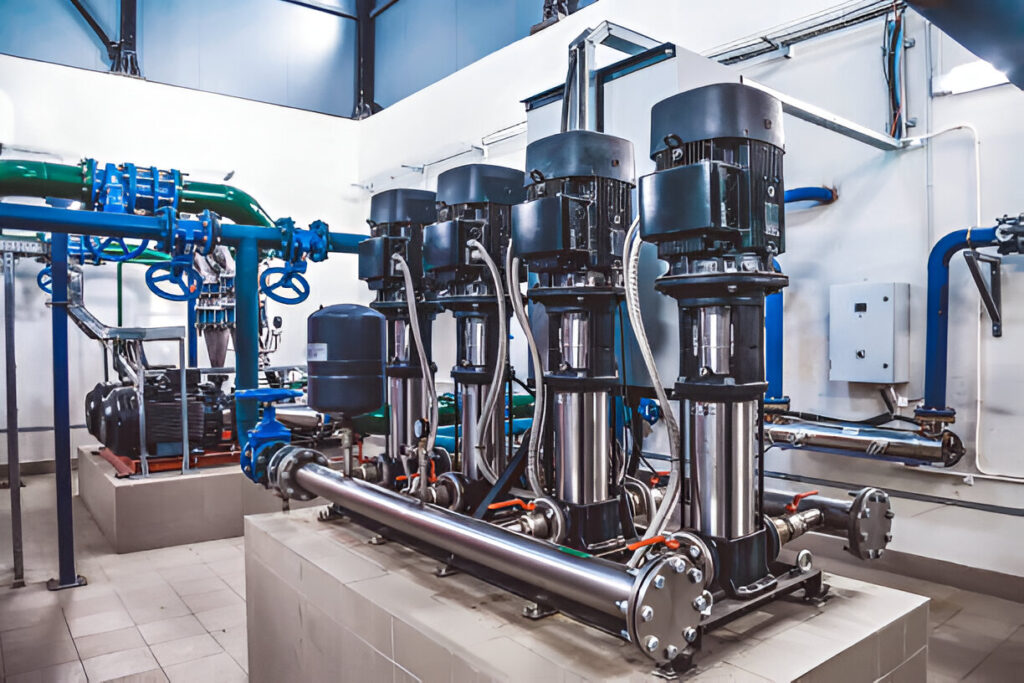Vertical pumps are essential to countless industrial operations in oil & gas, chemical processing, water treatment, and power generation to name a few. But over time, performance can degrade, technologies evolve, and demands increase. Knowing when to upgrade your vertical pump and how to do it effectively is key to minimizing downtime, improving reliability, and cutting operational costs.
Why Vertical Pumps Need Upgrades
Vertical pumps work hard—often 24/7—in harsh conditions. While routine maintenance can extend lifespan, every pump eventually faces issues like:
- Decreased efficiency
- Increased vibration or noise
- Higher energy consumption
- Outdated materials or design
- Inability to meet new process demands
If you’re seeing these signs, it may be time to stop patching and start planning a strategic upgrade.
When to Upgrade a Vertical Pump
1. Declining Performance
One of the most common indicators is a noticeable drop in flow rate or head. If your pump can no longer meet its duty point, it’s not just inefficient—it’s costing you money.
2. Frequent Repairs
Are you replacing bearings, seals, or impellers more often than usual? Chronic maintenance issues suggest the pump is nearing the end of its reliable service life.
3. Energy Inefficiency
Older pump designs consume more energy. Upgrading to a modern, high-efficiency vertical pump can reduce energy usage by 20–40%, which can mean six-figure savings over time.
4. Process Changes
Have you changed the fluid type, system layout, or throughput requirements? If your pump isn’t designed for your current process, performance and safety are both at risk.
5. Compliance and Safety
Updated environmental or industry standards may require new materials or features, especially for handling corrosive or hazardous liquids.
How to Upgrade Your Vertical Pumps
Step 1: Assess the Current System
Start with a detailed pump performance audit. Analyze flow, head, efficiency, vibration, and wear patterns. This provides a baseline for determining what’s needed.
Step 2: Consult with a Pump Specialist
Work with experts—like the engineers at Sundyne—to evaluate upgrade paths. In many cases, a retrofit or drop-in replacement offers a faster, more cost-effective solution than a full redesign.
Step 3: Choose the Right Upgrade Type
There are several ways to upgrade your vertical pump:
- Component Upgrades: Replace impellers, bowls, or motors for better performance without changing the whole unit.
- Material Upgrades: Swap outdated materials for corrosion-resistant alloys or composites.
- Hydraulic Redesign: Modify the pump internals to match updated flow or pressure requirements.
- Full Replacement: When repairs are no longer economical, a modern vertical pump with higher efficiency and lower maintenance needs may be the best investment.
Step 4: Plan the Installation
Minimize downtime by aligning the upgrade with scheduled shutdowns. Ensure piping, mounting, and power systems are compatible to avoid delays.
Step 5: Monitor and Optimize
After upgrading, implement performance monitoring tools. Track KPIs like vibration levels, flow, energy use, and temperature to ensure you’re getting maximum ROI.
Benefits of Upgrading Vertical Pumps
- Reduced Operating Costs: Higher efficiency = lower energy bills.
- Improved Reliability: Newer designs last longer and fail less often.
- Enhanced Safety: Better sealing systems and materials reduce risk in hazardous environments.
- Regulatory Compliance: Meet updated environmental and process standards.
- Operational Flexibility: Adapt to new production demands without redesigning your entire system.
Choosing the Right Pump Partner
Your upgrade is only as good as the team behind it:
- Decades of experience in engineered vertical pump solutions
- Custom upgrades to match your exact system requirements
- Energy-efficient, API-compliant pump models
- Rapid turnaround and full lifecycle support
FAQs
1. What are the signs that my vertical pump needs an upgrade?
Look for reduced flow, increased vibration, rising energy bills, or frequent repairs. These are clear indicators your pump is no longer performing optimally.
2. How long do vertical pumps typically last?
With proper maintenance, a vertical pump can last 15–30 years. However, changing process demands or outdated designs may require an upgrade sooner.
3. Can I retrofit my existing vertical pump instead of replacing it?
Yes. Many older pumps can be retrofitted with upgraded components like impellers, shafting, or motors to boost performance without full replacement.
4. What’s the ROI of upgrading a vertical pump?
Upgrading to an energy-efficient pump can deliver ROI in under two years through energy savings, reduced maintenance, and improved uptime.
5. How do I select the best vertical pump for my application?
Consider fluid type, flow rate, head, temperature, and NPSH requirements. Consulting with an engineered pump specialist ensures proper sizing and material selection.
Final Thoughts
Upgrading your vertical pump isn’t just a maintenance decision, it’s a smart business move. Whether you’re chasing higher efficiency, adapting to process changes, or staying ahead of regulations, the right upgrade strategy can transform your operation.

